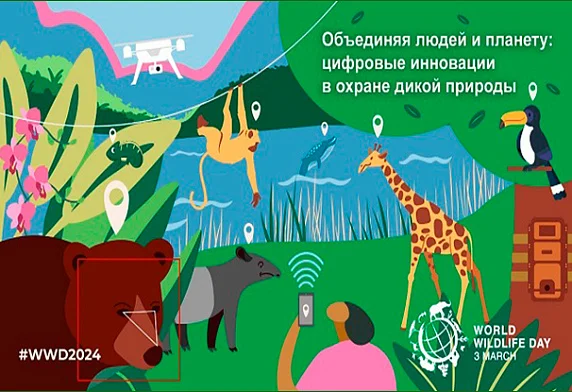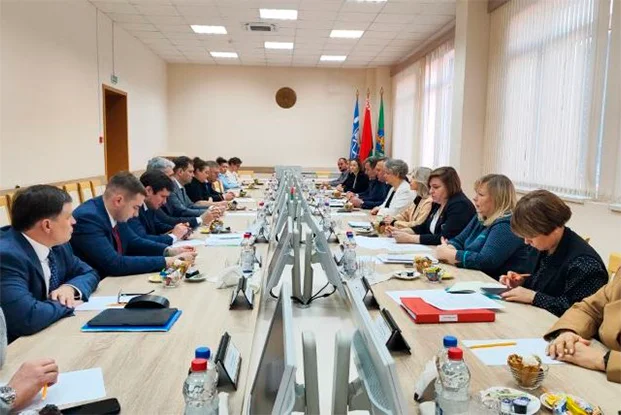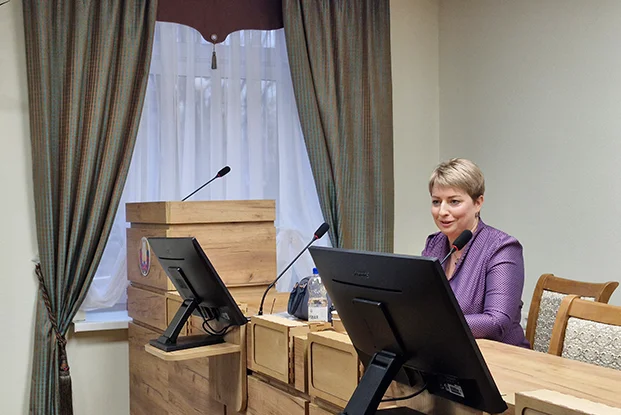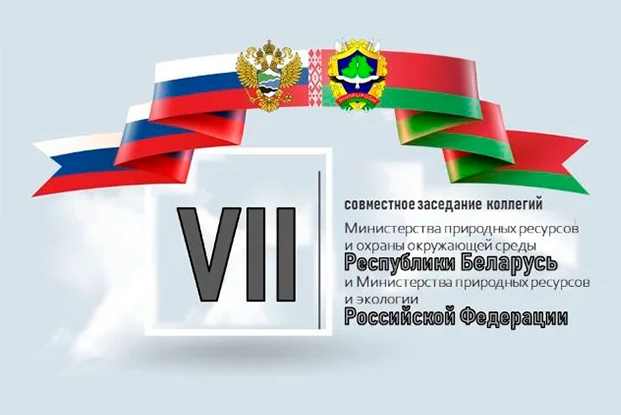
World Wildlife Day is celebrated on the day of the adoption of the Convention on International Trade in Endangered Species of Wild Fauna and Flora (CITES) in 1973. The UN General Assembly appointed the CITES Secretariat to coordinate the global celebration of this special day of wildlife in the world..
The main objective of the CITES Convention is to promote international cooperation in the protection of certain species of wild fauna and flora from overexploitation by regulating international trade. Import, export, re-export, and introduction from the sea of certain species of flora and fauna must be carried out on the basis of special permits and certificates.
For reference: the trade in wild animals and wild plants is very diverse – from live animals and plants and products obtained from wildlife to food products, exotic leather goods, wooden musical instruments, timber, tourist souvenirs and medicines.
In 2024, World Wildlife Day is celebrated under the theme – “Connecting People and Planet: Exploring Digital Innovations in Wildlife Conservation” to highlight the role of digital innovation in wildlife conservation, sustainable use of natural resources, including ensuring legal wildlife trade.
Serial production of digital sensors and related technologies makes it possible to collect and process data on environmental objects more efficiently and quickly.
These technologies are implemented in different ways: from satellite sensors carried by animals to camera traps, drones, deep-sea submarines and space satellites. These technologies allow for environmental monitoring, tracking and accounting of individual animal species on a larger scale, with higher resolution in inaccessible and dangerous places.
In the Republic of Belarus, such technologies are also used to collect and account for information on wild animals, their distribution and numbers, and, in particular, on rare and endangered species in the Republic of Belarus, included in the Red Book of the Republic of Belarus.
Recently, there have been trends towards aggravation of the situation around the concept of both the Red Book of the Republic of Belarus itself and individual species of wild animals included in it.
The Red Book is a document designed to focus attention on species of high conservation importance, reflecting information on the current state of such species.
Based on the lists of rare and endangered species in the territory of the Republic of Belarus, which are reflected in the Red Book, scientific and practical measures are being developed aimed at protecting, stabilizing and increasing the number of wild animal species that are disappearing at the global level.
The main directions of state policy in the field of ensuring the protection of wild animal and wild plant species included in the Red Book of the Republic of Belarus are defined in the strategy for the conservation and sustainable use of biological diversity and the National Action Plan for the Conservation and Sustainable Use of Biological Diversity for 2021-2025.
Restrictions, prohibitions and other measures regarding the protection, seizure, maintenance and (or) breeding in captivity, movement of wild animal and wild plant species included in the Red Book of the Republic of Belarus are regulated by the laws of the Republic of Belarus “On Environmental Protection”, “On the Animal World”, “On the Plant World”, “On Specially Protected Natural Areas”.
Thus, in order to protect wild animals and wild plants, the Ministry of Natural Resources and Environmental Protection carries out systematic work to identify the habitats of such wild animals and the growth of endangered plant species, and keeps records of these places.
In total, since the implementation of subprogram 4 “Conservation of Biodiversity” of the State Program “Environmental Protection and Sustainable Use of Natural Resources” for 2021-2025, approved by the Resolution of the Council of Ministers of the Republic of Belarus dated February 19, 2021 No. 99, 1,237 wild animal habitats and wild plant habitats have been transferred under protection to users of land plots or water bodies throughout the republic, including in the regions: Brest – 85 places; Vitebsk – 160 places; Gomel – 157 places; Grodno – 297 places; Minsk – 449 places; Mogilev – 89 places.
In addition to the transfer of wild animal habitats and wild plant habitats under protection, the Ministry ensures the development and approval of plans for the management of wild animal populations and wild plants related to species included in the Red Book of the Republic of Belarus, as well as species covered by international treaties of the Republic of Belarus and action plans for their conservation.
Currently, 16 action plans for the conservation of wild animals and 30 action plans for the conservation of wild plants related to species included in the Red Book of the Republic of Belarus or covered by international treaties of the Republic of Belarus, as well as the European Lynx Population Management Plan and the Bison Population Management Plan in the Republic of Belarus have been developed and are being implemented in the Republic.
The removal of wild animals and wild plants, related to species included in the Red Book of the Republic of Belarus, from their habitat and growth environment is permitted for certain purposes (scientific purposes, for the purpose of resettlement – resettlement, introduction, reintroduction, acclimatization or maintenance and breeding in captivity) upon agreement with the National Academy of Sciences of Belarus.
The unauthorized removal of endangered wild animals and wild plants from their habitat and growth environment, their illegal trafficking, as well as other actions that may lead to their death, reduction in numbers or disruption of their habitat, are prohibited and entail measures of both administrative and criminal liability.
Rare species of animals kept in captivity are subject to mandatory registration and accounting. As part of the registration, the availability of conditions for keeping such species in captivity is checked.
In addition, the movement of rare species of animals and plants, their parts and (or) derivatives thereof across the state border is carried out under permits, within the framework of which the legality of their ownership and presence on the territory of the republic is checked.
These measures make it possible to ensure conditions for the restoration of endangered species in nature.








